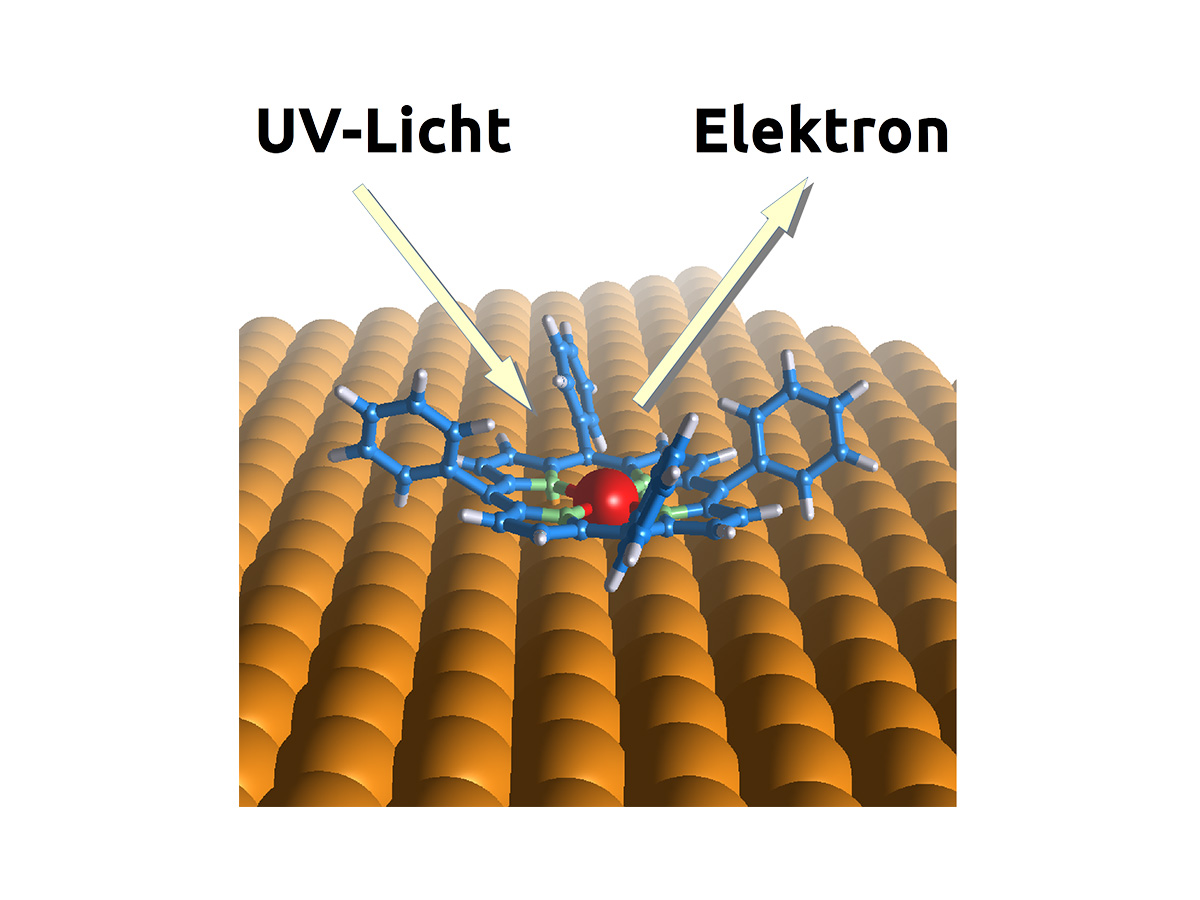Am Institut für Physik der Karl-Franzens-Universität Graz forschen Dr. Daniel Lüftner und Assoz.-Prof. Dr. Peter Puschnig seit Jahren an den Grundlagen für neue Halbleitertechnologien. Die Grazer Wissenschafter testen dabei gemeinsam mit KollegInnen des deutschen Forschungszentrums Jülich sowie der Universität Triest organische Moleküle auf deren elektronische Eigenschaften. In den Modellberechnungen und in Experimenten hat sich nun gezeigt, dass die organischen Moleküle „Porphyrine“ – bekannt als Farbstoff in biologischen Systemen – in der Verbindung mit Nickel, einem sogenannten Nickel-Porphyrin–Komplex, besondere elektronische Eigenschaften aufweisen.
Die WissenschafterInnen konnten zeigen, wie sich die atomare Struktur des Moleküls durch die Anlagerung auf dem Kupfersubstrat ändert und sie beobachteten einen unerwartet großen Ladungstransfer von dem metallischen Substrat zum Porphyrin-Molekül. Diese Eigenschaften tragen Wesentliches zum Design künftiger Solarzellen bei. Die Ergebnisse wurden nun in der renommierten Fachzeitschrift Nature Communications publiziert.
Porphyrine spielen in biologischen Systemen eine wichtige Rolle. So sind Eisen-Porphyrine ein wesentlicher Bestandteil des Hämoglobins und damit verantwortlich für den Sauerstofftransport im menschlichen Körper. „Inspiriert durch diese biologische Funktion werden Porphyrinen aber auch vielfältige technologische Anwendungsmöglichkeiten zugesprochen. Diese reichen von organischen Solarzellen über Gassensoren und Einzelmolekül-Schaltern bis hin zu Spin-Filtern“, erzählt Dr. Peter Puschnig. Insbesondere beeinflusst die atomare Struktur der Grenzschicht sowie die Wechselwirkung zwischen Molekül und Metall letztendlich die erwünschte Funktionalität. Das Verhalten der Elektronen in Grenzschichten und der Ladungstransfer zwischen den beiden Teilsystemen ist noch nicht eindeutig geklärt. In einem Experiment haben die WissenschafterInnen nun eine ultradünne Schicht (kleiner als ein Nanometer) von Nickel-Tetraphenyl-Porphyrin auf ein Kupfersubstrat aufgedampft. Die atomare Struktur wurde mithilfe eines Rastertunnelmikroskops untersucht. Die nicht erreichbaren Bereiche des Moleküls wurden mithilfe der Photoemissions-Tomografie betrachtet. Diese Technik, die in den vergangenen Jahren in Graz und Jülich entwickelt worden ist, ermöglicht die detaillierte Bestimmung der energetischen Lage sowie der räumlichen Struktur einzelner Molekülorbitale „Die Analyse unserer quantenmechanischen Berechnungen ergab einen unerwartet großen Elektronenübertrag vom Metall auf das Molekül“, erklärt dazu der Grazer Physiker Daniel Lüftner und führt aus: „Die Resultate belegen, dass Porphyrine – trotz der jahrelangen wissenschaftlichen Auseinandersetzung mit diesem Molekül – noch immer neue Fragen aufwerfen und zu neuen Erkenntnissen führen.“ Inwiefern diese Grundlagenforschung in technologische Anwendungen, wie etwa im Bau von Solarzellen, münden kann, sollen aufbauende Untersuchungen zeigen. Unterstützt wird das Projekt vom FWF.
Publikation:
G. Zamborlini, D. Lüftner, Zh. Feng, B. Kollmann, P. Puschnig, C. Dri, M. Panighel G. Di Santo, A. Goldoni, G. Comelli, M. Jugovac, V. Feyer, and C. M. Schneider, Multi-orbital charge transfer at highly oriented organic/metal interfaces, Nature Communications (2017)
Friday, 25 August 2017
